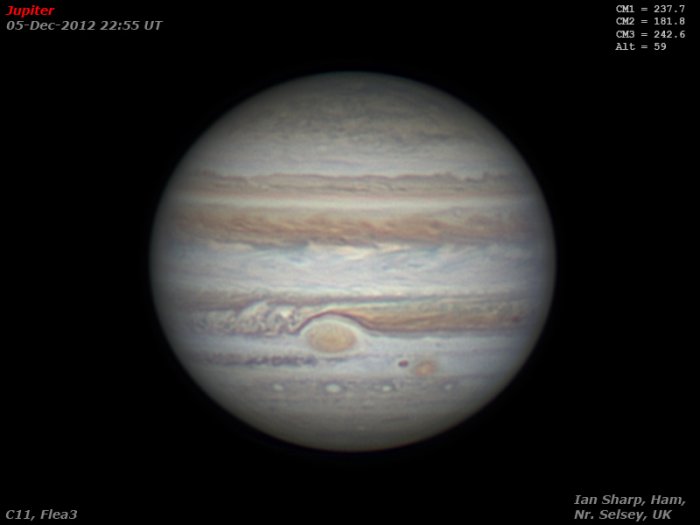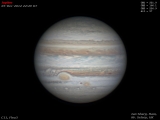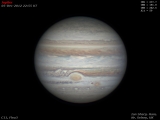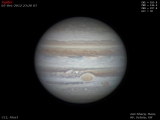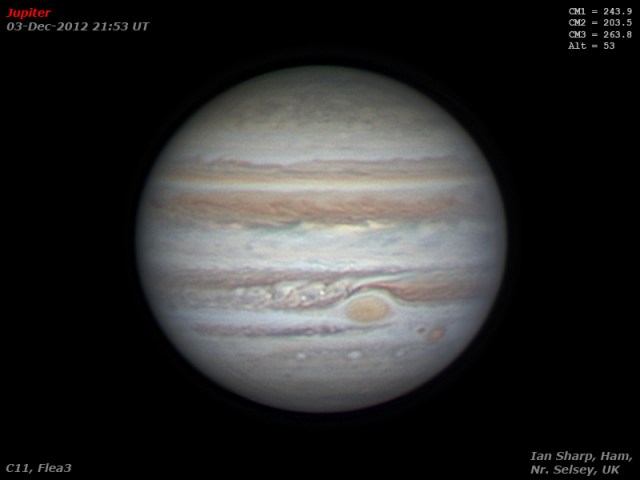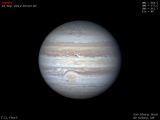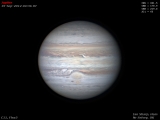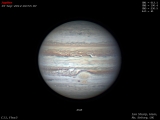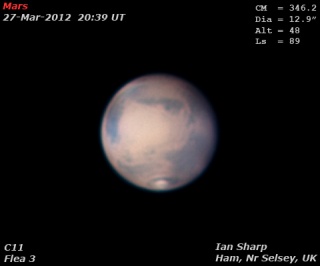Another Mars image taken last night from here in Ham.
The biggest and most obvious dark region called Syrtis Major is visible on the left in this image. It’s interesting that the Martian ‘day’ is about 24 hours and 40 minutes (in other words the time Mars takes to rotate once on its axis). This means that, for Earth-bound observers, we only see about 40 minutes of ‘new’ territory each night if we observe at the same time. So, Syrtis Major will slowly crawl into full view over the next few days (for UK observers at least).
A nice view also of the snake-like feature called Sinus Sabaeus with the ‘head’ part called Sinus Meridiani.
The seeing conditions were pretty jittery last night, so again this image is quite soft on detail. Not so many clouds visible either.



